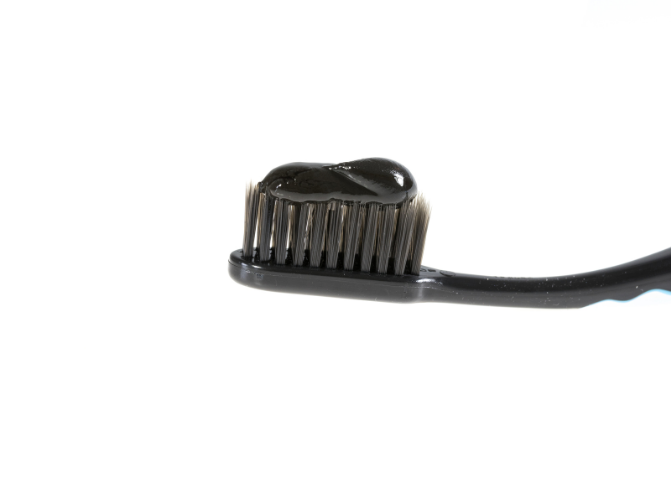05/10/2021
Teeth Whitening – The Best Way To Keep Your Teeth Shining
Table of Contents
Learn how to keep your teeth white. What food should you avoid and what are some remedies for stained teeth?
With an increasing awareness about oral aesthetics around the world, teeth staining has become one of the most popular oral concerns by the public. Whiter teeth can reflect better oral health, improve your smile and self confidence and help you make a better first impression. Lets look at the ways to reduce staining and whiten teeth.
How to whiten teeth?
Teeth whitening can be achieved by the removal of dental staining, which may be caused by certain foods, beverages, medications, and even infections. When one is making efforts to get rid of stains for whiter teeth, it is important to know the two types of stains that may be present in the oral cavity, which include: intrinsic stains and extrinsic stains. Intrinsic stains are extremely difficult to get rid of and may be caused by genetic factors, plaque, and dental caries, or certain medications like tetracycline. On the other hand, extrinsic stains are much easier to remove, which may even be achieved by at-home remedies and practices. Examples of such stains include those caused by foods and beverages or the tooth discoloration seen in smokers and individuals with poor oral hygiene. 1
Foods and drinks to avoid
Consumption of certain foods and drinks may lead to tooth staining. These include:
Coffee
Coffee is an example of a food that may cause tooth discoloration due to the high levels of tannins found in it. Tannin is the substance that gives the coffee its bitter taste and leads to a dry feel of the mouth after its consumption. Even though these are important antioxidants and may protect the body against free radical damage, they also lead to teeth staining which at times may be difficult to get rid of. Moreover, the acidic properties of coffee also cause the mineral content of the outer tooth layer to dissolve, leading to the exposure of the underlying layer known as dentin. The discoloration which may be associated with coffee is yellowish– partly due to the color of the coffee and partly due to the color of exposed dentin. 2

Tea
Similar to coffee, a major component of black tea that may lead to the yellowish discoloration of teeth is the presence of a substance known as tannin. However, unlike coffee, the amount of tannin in black tea is much greater, which can lead to significant discoloration of the teeth on its regular consumption. However, studies have found the dilution of black tea with milk to be able to prevent this discoloration. Moreover, the individual may also shift towards other types of tea like green tea or white tea, which are not associated with tooth staining. 3
Red wine
Red wine has an intense red color and is made by the fermentation of grapes. The regular consumption of red wine may lead to a light purple discoloration of the teeth, which may greatly affect a person’s confidence and ability to socialize. Moreover, long-term consumption of red wine may also lead to a brown, blue, or gray discoloration of the teeth, which may often be very difficult to get rid of. This discoloration is caused by the high levels of tannins, acids, and dyes found in red wine, which can lead to erosion of the tooth surface – leaving it stained and discolored.
Tomato sauce
Tomatoe sauce has an intense red color, which can lead to a yellow discoloration of the teeth. This is because of the high levels of acid found in fresh tomatoes, which can lead to erosion of the tooth surface and exposure to the underlying tooth layers. This acid erosion does not only lead to exposure of underlying layers but also causes the tooth surface to roughen up, which leads to greater attraction of pigments that might be present in other food sources. 4
Smoking
Cigarette smoking stains teeth. Its really important to stop smoking to improve your smile but also reduce your long term risk of lung cancer
Foods that can help teeth whitening
Consumption of certain foods and drinks may lead to the prevention of tooth staining. These include:
Fibrous foods
Fibrous foods like broccoli, celery, apples, carrots, and pears may help prevent tooth staining and associated decay. This is because the high fiber content found in these foods scrubs up against the teeth as the individual chews on it, removing any plaque and stains that may be forming on the tooth surfaces.
Milk and milk products
Milk and its products are a rich source of calcium which is required by the teeth for the maintenance of their health. However, it does not only improve tooth health but also helps prevent tooth staining by its ability to repair acid roughened tooth surface, which is a target of stains found in different foods.
Xylitol gums
Even though they are not technically considered food, xylitol or sugar-free gums can act as excellent stain-preventing mechanisms due to their ability to stimulate saliva production. The produced saliva not only washes away the acids accumulation on the tooth surface but also returns the calcium and phosphate ions to the teeth, which are required for their repair and maintenance.
Brushing and flossing
Since the accumulation of plaque and acids on the surface of the teeth can lead to their damage and greater susceptibility to teeth staining, brushing and flossing are highly recommended as a preventative measure against teeth discoloration and helps achieve whiter teeth. 5 It’s important to get your tooth and gum health under control. This makes tooth whitening treatments more even and effective.

Teeth whitening remedies
The whitening remedies which may lead to teeth whitening include:
- Charcoal: Charcoal acts as a dentifrice for the oral cavity, and its high surface area allows effective cleaning of all surfaces of the teeth, leading to whiter appearing teeth.
- Baking soda: Baking soda is a rich source of sodium bicarbonate, which provides an alkaline environment to the teeth. This alkaline environment leads to a greater release of free radicals, which helps in teeth whitening.
- Hydrogen peroxide: Hydrogen peroxide is a weak acid by nature and may be applied to the tooth surface to achieve a bleaching effect. This leads to a lightening of the tooth stains leading to whiter appearing teeth.
- Apple cider vinegar: Apple cider vinegar may be used to remove the plaque buildup on the tooth surface, which leads to the development of tooth discoloration. This removal of the plaque layer leads to the appearance of cleaning-looking teeth.
Whitening toothpaste
Whitening toothpaste differs from normal toothpaste by the high levels of abrasive and detergents found in them. Even though they do not contain bleaches like sodium hypochlorite, they may contain some levels of hydrogen peroxide or carbamide peroxide leading to the appearance of whiter-looking teeth with each wash. 6
Whitening treatments
Different types of Whitening treatments have taken the dental market by storm in Australia. The most popular type of these whitening treatments include:
- Zoom whitening: Zoom whitening is a type of bleaching process that uses 25% of hydrogen peroxide, which is applied to the tooth surface in an office setting. This is followed by the use of the zoom advanced power chairside lamp, which accelerates the process of bleaching, leading to quicker teeth whitening results.
- Teeth whitening strips: Teeth Whitening Strips contain variable levels of hydrogen peroxide or other bleaching agents and are applied to the tooth surface for a time ranging from 5 to 45 minutes. These result in evident tooth bleaching leading to 5 to 10 shades lighter appearing teeth.
- Laser: Laser is another whitening treatment that is used commonly in Australia and may only be conducted by trained professionals. This treatment includes the painting of a whitening agent on the surface of the tooth, after which it is exposed to a laser to activate it.
References:
- Koch, Goran, et al., eds. Pediatric dentistry: a clinical approach. John Wiley & Sons, 2017.
- Nogueira JS, Lins-Filho PC, Dias MF, Silva MF, Guimarães RP. Does comsumption of staining drinks compromise the result of tooth whitening?. J Clin Exp Dent. 2019;11(11):e1012-e1017. Published 2019 Nov 1. doi:10.4317/jced.56316
- Lee RJ, Bayne A, Tiangco M, Garen G, Chow AK. Prevention of tea-induced extrinsic tooth stain. Int J Dent Hyg. 2014 Nov;12(4):267-72. doi: 10.1111/idh.12096. Epub 2014 Jul 10. PMID: 25040739.
- Masterson EE, Barker JC, Hoeft KS, Hyde S. Shades of Decay: The Meanings of Tooth Discoloration and Deterioration to Mexican Immigrant Caregivers of Young Children. Hum Organ. 2014;73(1):82-93. doi:10.17730/humo.73.1.861831136642q074
- Epple M, Meyer F, Enax J. A Critical Review of Modern Concepts for Teeth Whitening. Dent J (Basel). 2019;7(3):79. Published 2019 Aug 1. doi:10.3390/dj7030079
- Carey CM. Tooth whitening: what we now know. J Evid Based Dent Pract. 2014;14 Suppl:70-76. doi:10.1016/j.jebdp.2014.02.006
Recommended reading
Search for a specific topic or filter by categories to find information on what you need to know on the full Medmate Journal


The Belt Squat RDL is a Game-Changer
Looking to build a stronger, more powerful lower body while minimizing risk? The Belt Squat RDL might just be the exercise you’ve been missing. This unique movement, often overlooked, offers…
